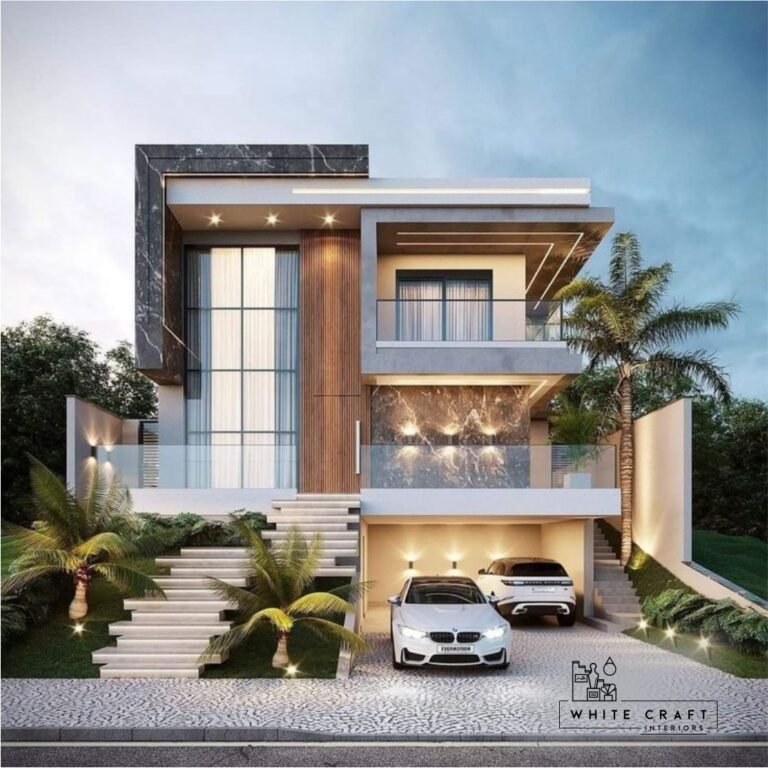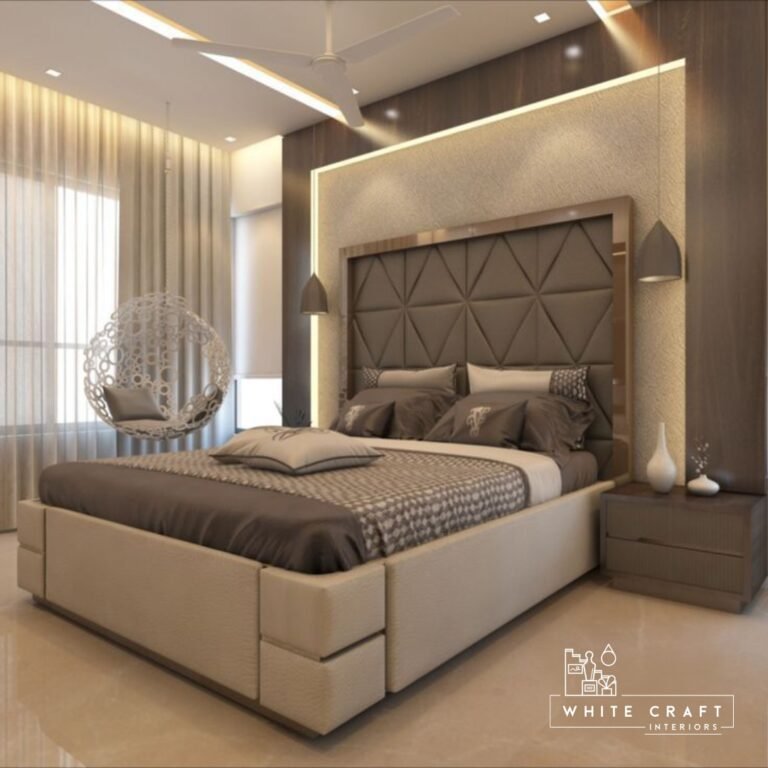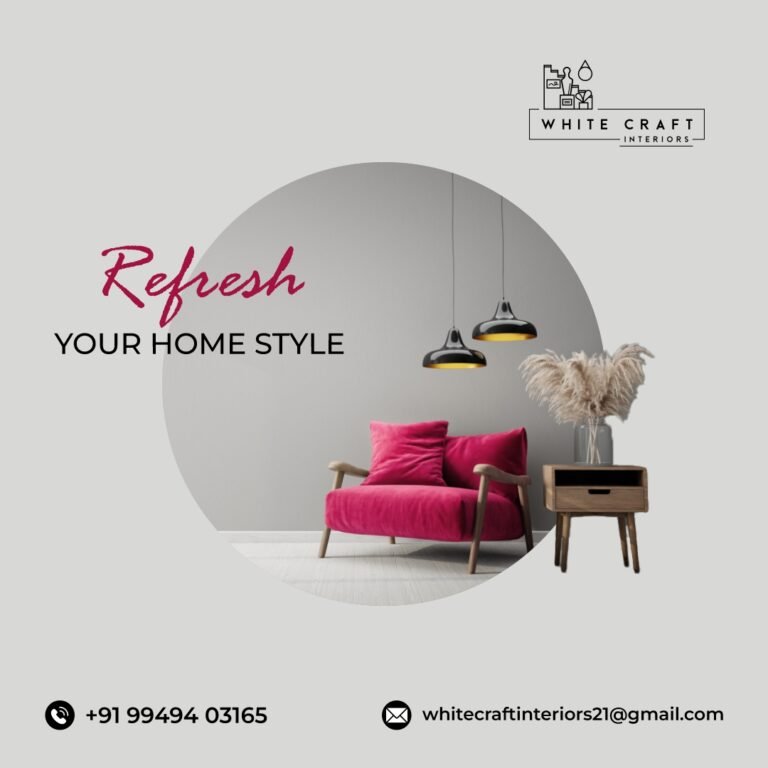Designing Spaces for Children: Fun and Functional Ideas

Designing Spaces for Children: Fun and Functional Ideas. Planning a space for children includes more than fair picking shining colours and fun stylistic layout. It’s almost making an environment that is both lively and viable, one that cultivates inventiveness, bolsters improvement, and develops with your child. At Whitecraft Contribute, we get the special needs of children’s spaces and the significance of adjusting fun with usefulness. In this web journal, we’ll investigate imaginative and viable thoughts for planning spaces that cater to the needs of children whereas improving their ordinary experiences. Interior design Firms in Hyderabad
Designing Spaces for Children: Fun and Functional Ideas:
1. Prioritise Safety:
Safe Plan Choices
Safety is fundamental in any children’s space. Start by selecting furniture and stylistic layout that are free of sharp edges and little parts that might posture choking risks. Utilize divider grapples to secure overwhelming furniture and guarantee that any electrical outlets are secured. Select non-toxic paint and wrap it up to dodge harmful chemicals.
Soft Flooring
Consider delicate flooring choices such as range mats, froth tiles, or carpet to pad falls and give a comfortable play zone. These materials not as it were to improve security but moreover include warmth and delicateness to the room.
2. Make Multi-Functional Spaces:
Flexible Furniture
Children’s needs and interface alter quickly, so select for furniture that can adjust to different occupations. For illustration, select a bed with built-in capacity drawers or a work area that can twofold as a creating table. Secluded furniture pieces can be improved or extended as needed.
Convertible Furniture
Consider contributing convertible furniture such as a bunk that can move into a little child bed, or a changing table that pairs as a dresser. This approach not as spares space but too amplifies the life expectancy of your furniture.

3. Grasp Playfulness:
Bright Colors and Themes
Incorporate shining colors and perky topics to invigorate inventiveness and creative ability. Utilise dynamic colours on dividers, bedding, and adornments, and select subjects that reflect your child’s interface, whether it’s space investigation, pixie stories, or wilderness adventures. Top10 Interior designers in Hyderabad
Themed Décor
Add fun components such as divider decals, themed carpets, and perky window ornaments to bring your child’s interface to life. Intuitively stylistic layout like chalkboard dividers or attractive sheets can give continuous excitement and energies creativity.
Play Zones
Designate particular zones for play inside the room. Consider joining a perusing alcove with comfy pads and a little bookshelf or a play tent for creative undertakings. A well-designed play region makes a difference, keeps toys organised and gives a committed space for your child to investigate and learn.
4. Centre on Functionality:
Smart Capacity Solutions
Effective capacity is significant in a child’s room to keep things organised and open. Utilise a combination of racking, canisters, and wicker containers to store toys, books, and clothing. Name holders offer assistance to more seasoned children to keep their assets organised.
Built-In Storage
Incorporate built-in capacity arrangements such as window seats with capacity underneath or custom cabinetry that fits the room’s format. These arrangements maximise space and give plentiful capacity without relinquishing style. Designing Spaces for Children: Fun and Functional Ideas.
Homework and Make Areas
Designing Spaces for Children: Fun and Functional Ideas. Design a committed space for homework and create a strong work area, great lighting, and organisational devices. Guarantee that the region is free of diversions and prepared with supplies required for school ventures and imaginative activities.
5. Personalize the Space:
Custom Artwork
Involve your child in the plan by consolidating their work of art or photographs into the stylistic layout. Showing their manifestations not as it were personalised the space but moreover boosts their certainty and makes them feel valued. Designing Spaces for Children: Fun and Functional Ideas.
Name and Development Charts
Personalise the room with title decals or custom development charts to track your child’s development over a long time. These components include an individual touch and make enduring memories. Designing Spaces for Children: Fun and Functional Ideas.
Incorporate Interests
Design the room around your child’s side interests and interface. Whether they cherish dinosaurs, music, or sports, coordinated components that reflect their interests. This might be through themed bedding, divider craftsmanship, or embellishing accents.
6. Arrange for Growth:
Adaptable Design
Design the room with future development in intellect. Select furniture and stylistic layout that can advance with your child’s changing tastes and needs. For illustration, select for impartial divider colours and include pops of colour through extras that can be effortlessly upgraded as they grow. Designing Spaces for Children: Fun and Functional Ideas.
Adjustable Fixtures
Designing Spaces for Children: Fun and Functional Ideas. Select flexible lighting installations and furniture that can be altered as your child develops. A work area that develops with them or movable racking that can be repositioned will guarantee that the room remains useful and a la mode through the years.
7. Join Learning and Development:
Educational Elements
Incorporate instructive components into the room to back your child’s improvement. Utilise wall-mounted maps, instructive blurbs, or intelligently learning devices to make a space that advances interest and learning.
Sensory Play
Designing Spaces for Children: Fun and Functional Ideas. Include tangible play components such as finished divider boards, intuitive toys, or tactile canisters. These highlights lock in diverse faculties and back cognitive and engine development. Designing Spaces for Children: Fun and Functional Ideas.
Encourage Independence
Design the space to empower freedom by consolidating moo capacity arrangements and furniture that your child can effectively get to. This cultivates a sense of duty and makes a difference when they learn to oversee their belongings.
8. Make a Cosy Atmosphere:
Comfortable Textiles
Add consolation to the room with delicate materials such as extravagant mats, cosy covers, and enhancing pads. These components make a warm and welcoming environment that is idealised for unwinding, perusing, or playing.
Ambient Lighting
Use a combination of surrounding, errand, and emphasise lighting to make a cosy environment. Consider including a nightlight or a light with a fun plan to give tender brightening and make the room feel more secure. Designing Spaces for Children: Fun and Functional Ideas.
Personal Retreat
Designing Spaces for Children: Fun and Functional Ideas. Design a little region inside the room where your child can withdraw to loosen up. This may be a cosy perusing niche with a comfortable chair and delicate lighting or a calm corner with calming stylistic layout where they can unwind and reflect.
Conclusion
Designing a space for children includes an astute adjustment of fun and usefulness. By prioritising security, grasping perky components, centering on common sense, and arranging for development, you can make a room that is both pleasant and steady of your child’s improvement. At Whitecraft Add, we specialise in creating spaces that mix fashion with common sense, guaranteeing that your child’s room is a genuine reflection of their identity and needs.







